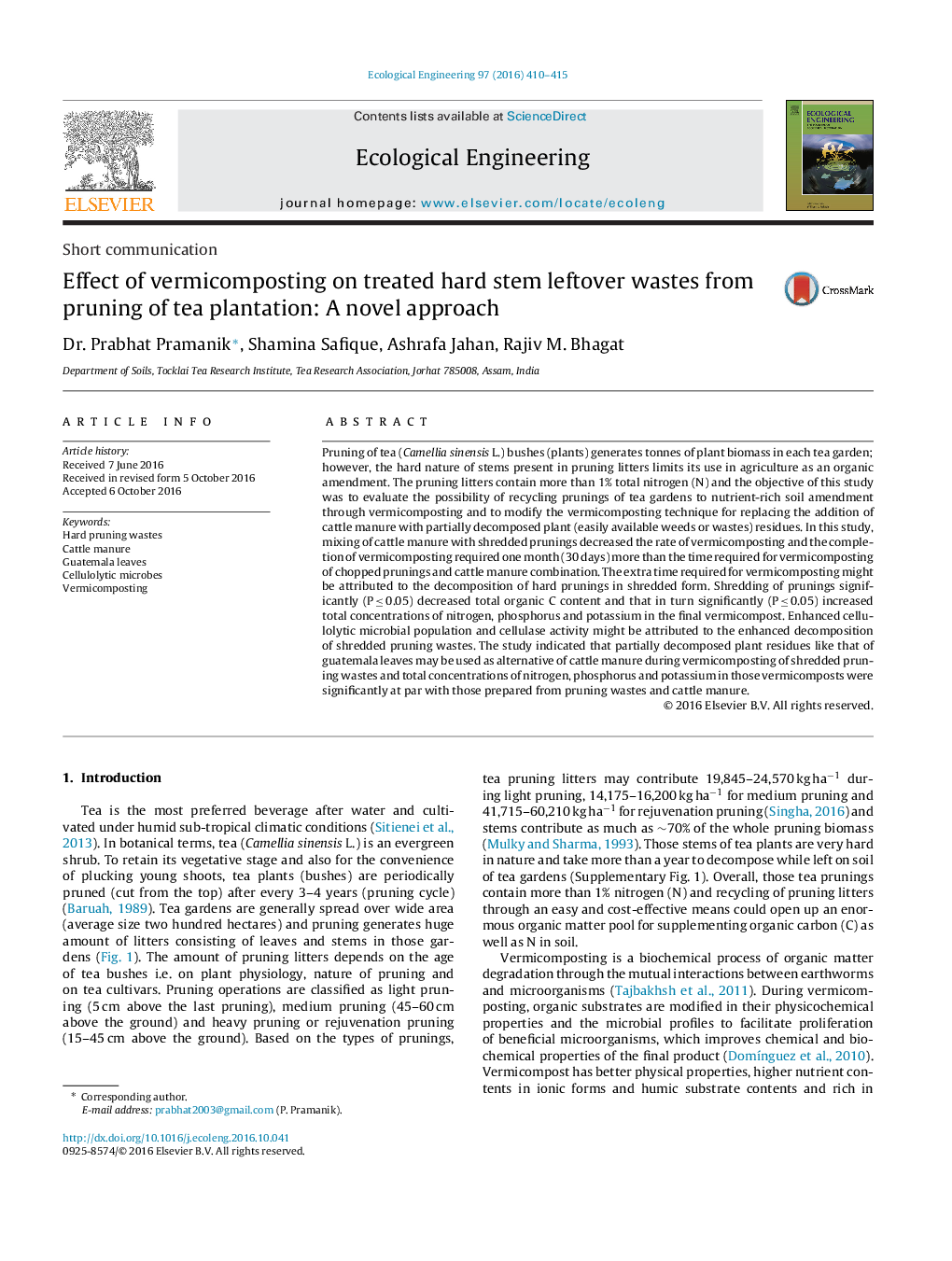| کد مقاله | کد نشریه | سال انتشار | مقاله انگلیسی | نسخه تمام متن |
|---|---|---|---|---|
| 4388401 | 1618002 | 2016 | 6 صفحه PDF | دانلود رایگان |
• Prunings can be recycled through vermicomposting in shredded form.
• Enhancing microbial activity exposing inner portion is the key to decompose prunings.
• Manure is mixed with prunings for boosting activities of earthworm and microorganisms.
• Partially decomposed plant residues may replace manure during vermicomposting.
Pruning of tea (Camellia sinensis L.) bushes (plants) generates tonnes of plant biomass in each tea garden; however, the hard nature of stems present in pruning litters limits its use in agriculture as an organic amendment. The pruning litters contain more than 1% total nitrogen (N) and the objective of this study was to evaluate the possibility of recycling prunings of tea gardens to nutrient-rich soil amendment through vermicomposting and to modify the vermicomposting technique for replacing the addition of cattle manure with partially decomposed plant (easily available weeds or wastes) residues. In this study, mixing of cattle manure with shredded prunings decreased the rate of vermicomposting and the completion of vermicomposting required one month (30 days) more than the time required for vermicomposting of chopped prunings and cattle manure combination. The extra time required for vermicomposting might be attributed to the decomposition of hard prunings in shredded form. Shredding of prunings significantly (P ≤ 0.05) decreased total organic C content and that in turn significantly (P ≤ 0.05) increased total concentrations of nitrogen, phosphorus and potassium in the final vermicompost. Enhanced cellulolytic microbial population and cellulase activity might be attributed to the enhanced decomposition of shredded pruning wastes. The study indicated that partially decomposed plant residues like that of guatemala leaves may be used as alternative of cattle manure during vermicomposting of shredded pruning wastes and total concentrations of nitrogen, phosphorus and potassium in those vermicomposts were significantly at par with those prepared from pruning wastes and cattle manure.
Journal: Ecological Engineering - Volume 97, December 2016, Pages 410–415
